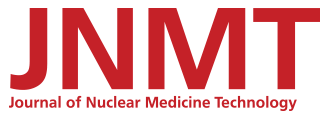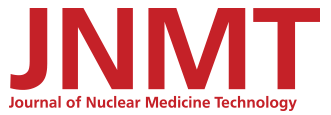Abstract
The assessment of regional skeletal metabolism using 18F-fluoride PET (18F-PET) requires segmentation of the tissue region of interest (ROI). The aim of this study was to validate a novel approach to define multiple ROIs at the proximal femur similar to those used in dual x-ray absorptiometry. Regions were first drawn on low-dose CT images acquired as a routine part of the PET/CT study and transferred to the 18F-PET images for the quantitative analysis of bone turnover. Methods: Four healthy postmenopausal women with a mean age of 65.1 y (range, 61.8–70.0 y), and with no history of metabolic bone disorder and not currently being administered treatment affecting skeletal metabolism, underwent dynamic 18F-PET/CT at the hip with an injected activity of 180 MBq. The ROIs at the proximal femur included femoral shaft, femoral neck, and total hip and were segmented using both a semiautomatic method and manually by 8 experts at manual ROI delineation. The mean of the 8 manually drawn ROIs was considered the gold standard against which the performances of the semiautomatic and manual methods were compared in terms of percentage overlap and percentage difference. The time to draw the ROIs was also compared. Results: The percentage overlaps between the gold standard and the semiautomatic ROIs for total hip, femoral neck, and femoral shaft were 86.1%, 37.8%, and 96.1%, respectively, and the percentage differences were 14.5%, 89.7%, and 4.7%, respectively. In the same order, the percentage overlap between the gold standard and the manual ROIs were 85.2%, 39.1%, and 95.2%, respectively, and the percentage differences were 19.9%, 91.6%, and 12.2%, respectively. The semiautomatic method was approximately 9.5, 2.5, and 67 times faster than the manual method for segmenting total-hip, femoral-neck, and femoral-shaft ROIs, respectively. Conclusion: We have developed and validated a semiautomatic procedure whereby ROIs at the hip are defined using the CT component of an 18F-PET/CT scan. The percentage overlap and percentage difference results between the semiautomatic method and the manual method for ROI delineation were similar. Two advantages of the semiautomatic method are that it is significantly quicker and eliminates some of the variability associated with operator or reader input. The tube current used for the CT scan was associated with an effective dose 8 times lower than that associated with a typical diagnostic CT scan. These results suggest that it is possible to segment bone ROIs from low-dose CT for later transfer to PET in a single PET/CT procedure without the need for an additional high-resolution CT scan.
Footnotes
Published online Aug. 14, 2012.







